High ACOS Got You Frustrated? Stop Wasting Ad Spend & Check This Out Now!
ACOS (Advertising Cost of Sales) refers to the percentage of advertising spend relative to advertising sales revenue. The calculation formula is as follows: ACOS = (Advertising Spend ÷ Advertising Sales Revenue) × 100%
For example, an ACOS of 90% means that for every \$100 in advertising sales revenue, you need to pay 90% (\$90) in advertising fees.
ACOS is a crucial metric for measuring advertising effectiveness. Generally, the lower the ACOS, the better. However, advertising effectiveness is influenced by various factors, such as: targeted keywords, campaign strategies, competitor competition, etc. Maintaining low ad spend and high sales revenue is not easy.
Therefore, consistently high ACOS has become a major concern for many new sellers, because it means that advertising is constantly burning money, but the returns are minimal, and it may even lead to continuous losses.
Although it's challenging, it's not impossible to effectively lower ACOS. You can optimize your advertising ACOS by starting with the following 4 steps.
I. Spend Your Budget During the Right Time Periods
Due to different time zones and varying purchase frequencies throughout the day across countries, we need to allocate our budget to time periods with high purchase frequency to increase advertising sales revenue.
1. Identify Time Periods with High Purchase Frequency
Open YouMailCloud's "Hourly Sales Data (Last Four Weeks)", select "Product Equals", enter the product ASIN, and click "Search". You can then view the 24-hour hourly order volume of the product for the past four weeks and analyze to identify high-frequency purchase time periods.
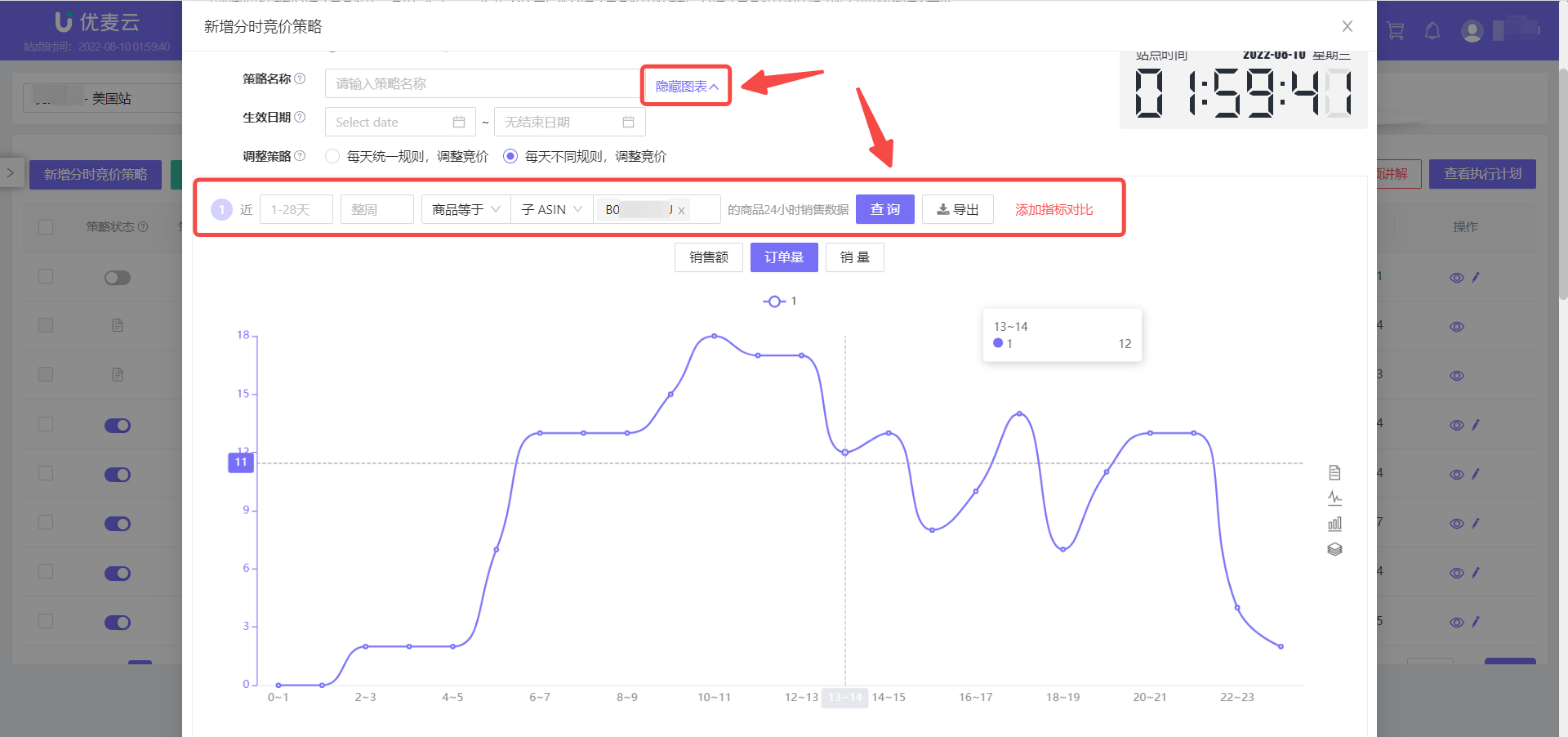 +
+
(Source: Ad Management -> Dayparting Strategy)
Simultaneously, combine this analysis with advertising increment trends to further confirm time periods with high purchase frequency.
Open the ad campaign's "Hourly Trends" to view the incremental data of the ad campaign. By analyzing its hourly and minute-by-minute incremental trends, you can determine which time periods are most suitable for increasing ad spend.
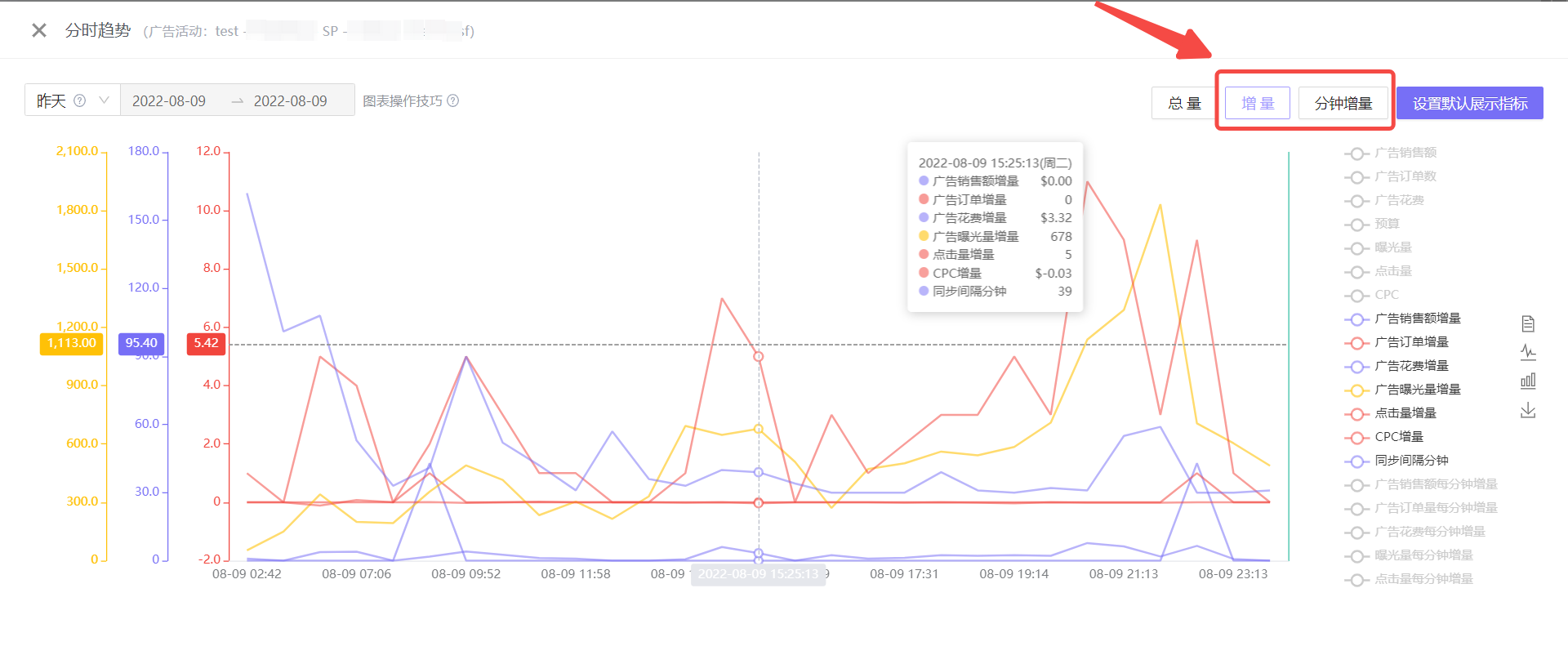 +
+
(Source: Ad Management -> Ad Campaigns)
2. Set Dayparting Bidding and Budget Strategies
After identifying time periods with high purchase frequency, you can set dayparting bid and budget adjustments. For these time periods, increase ad investment to enhance ad competitiveness. For other time periods, you can lower bids and budgets to simply keep the ads online.
Open YouMailCloud's "Dayparting Strategy" to set dayparting bid and dayparting budget strategies respectively.
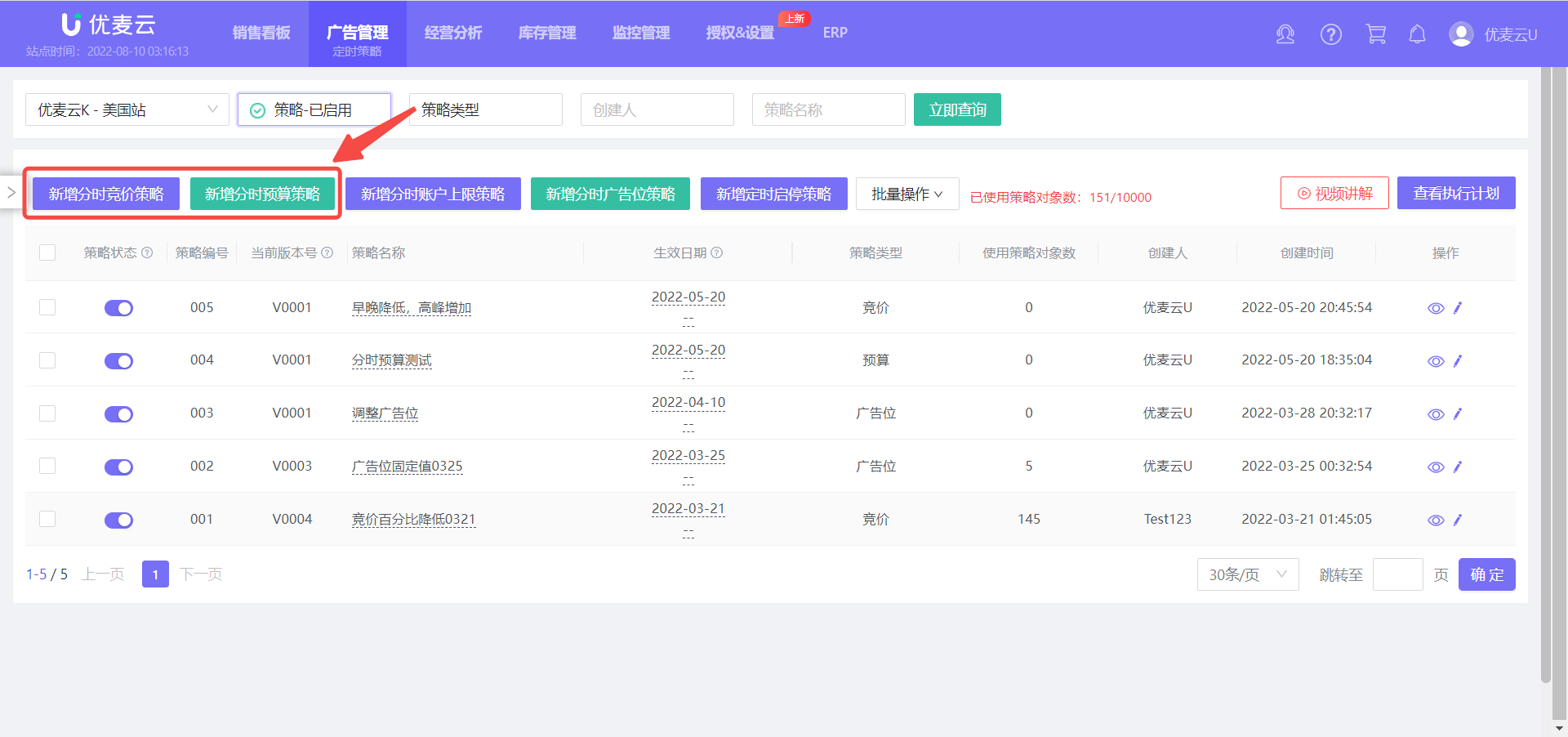 +
+
(Source: Ad Management -> Dayparting Strategy)
Here, some sellers may ask, "Is it okay to only set dayparting bid adjustments?"
It is not recommended. Ad bidding and budget are inseparable. With reasonable bids but insufficient budget support, the budget will be exhausted before the ads can effectively run, and sales will still not improve. The opposite is also true. Therefore, the two need to be combined to keep ads consistently online and continuously effective.
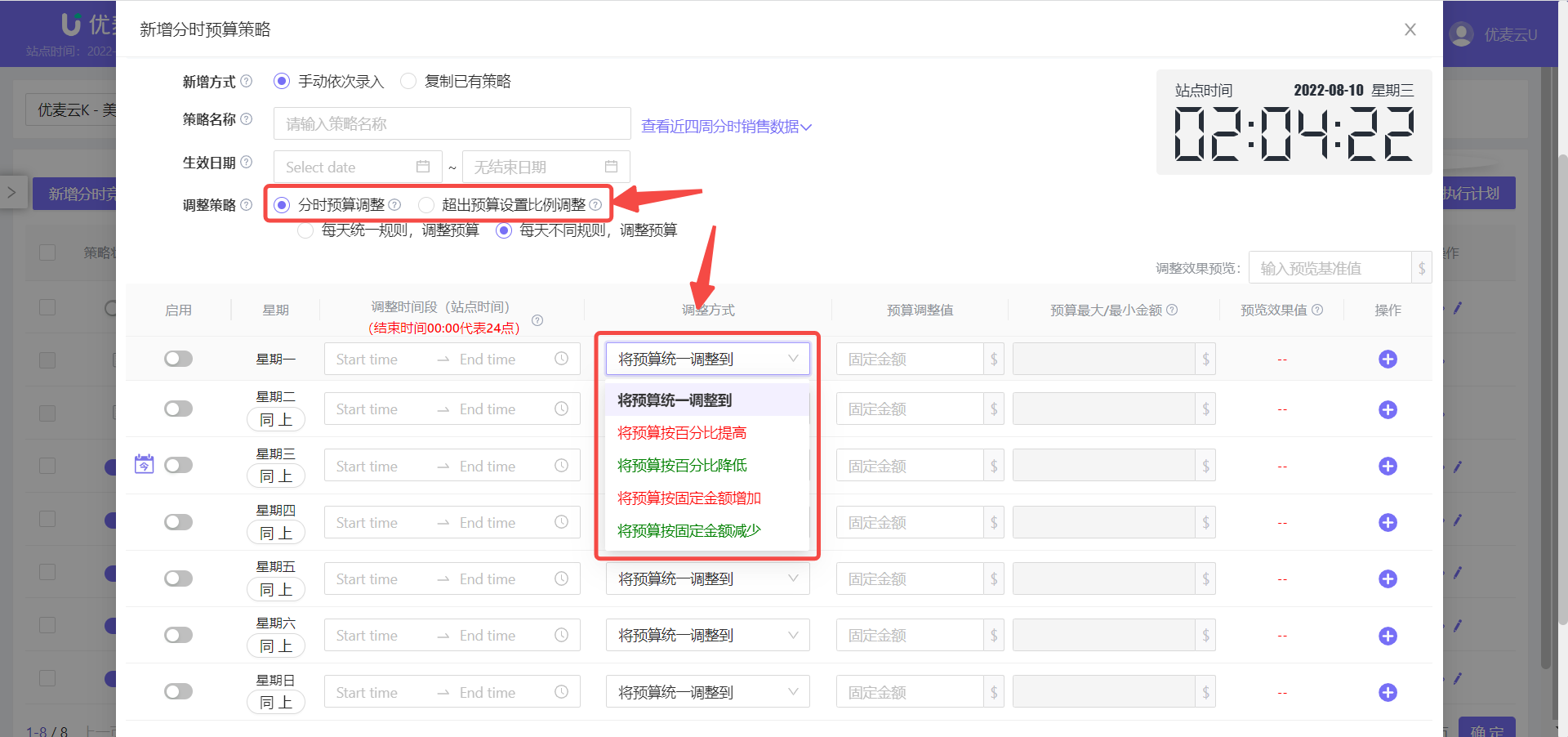 +
+
(Source: Ad Management -> Dayparting Strategy)
II. Place Ads in Appropriate Positions to Avoid Ineffective Competition
In addition to reasonable bidding and budget, appropriate ad placement is equally important.
Especially when your own competitiveness is not yet strong enough, appearing next to powerful competitors will only waste your advertising budget in vain. Therefore, when competitiveness is insufficient, we need to temporarily avoid the strongest opponents and conserve our strength.
Through keyword ranking monitoring, monitor ranking changes at different times, view the product information on the first 3 pages of the ranking results, analyze the surrounding competitors at that time, confirm whether the ad position is suitable for targeting, whether it is necessary to lower bids to adjust the ad position, and whether it is necessary to target other keywords, etc.
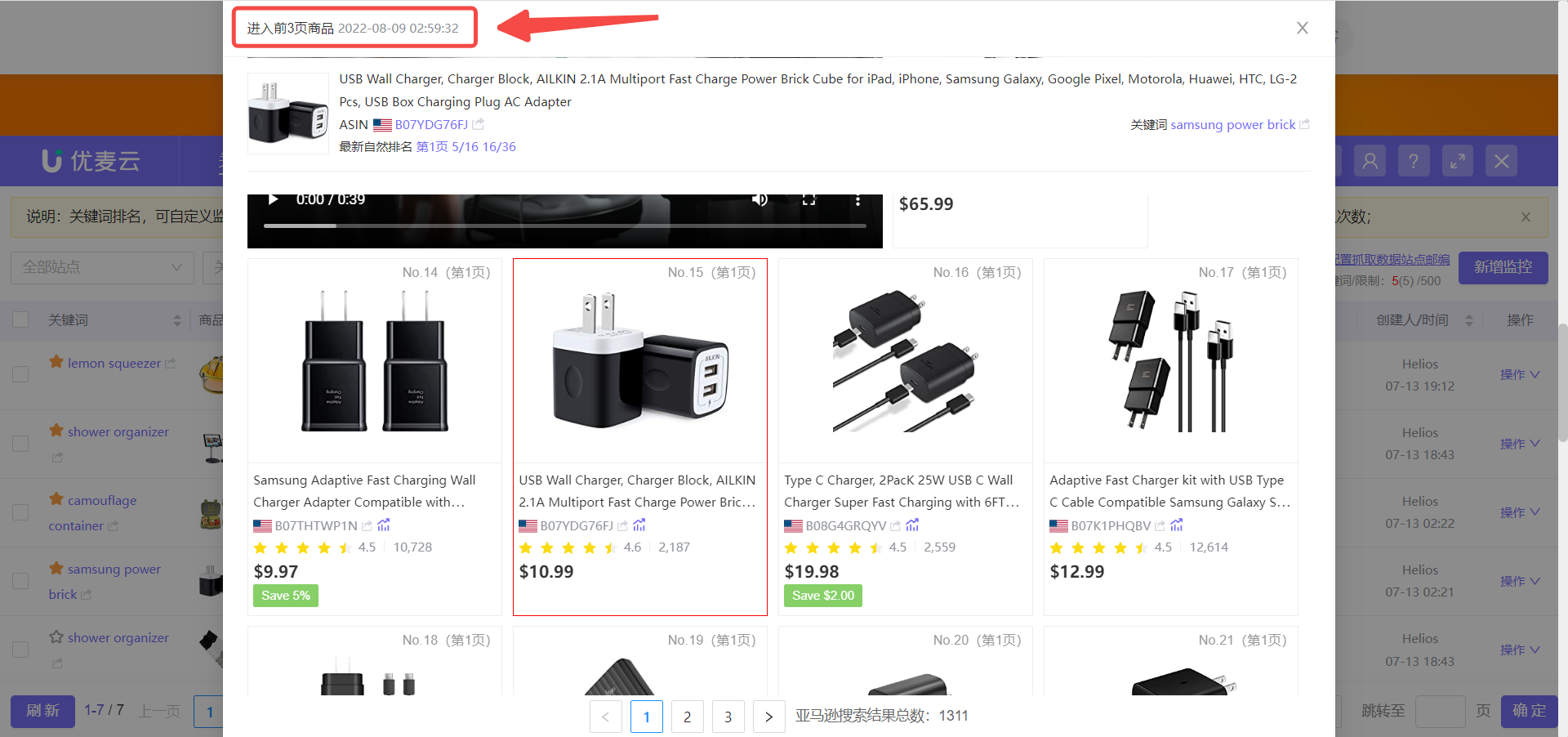 +
+
(Source: YouMailCloud Plugin -> Keyword Ranking)
III. Negate Wasteful Search Terms in a Timely Manner to Avoid Ineffective Spending
Some advertising search terms only waste budget in vain without any effective returns. These terms need to be added to negative keywords in a timely manner to allow limited budget to be spent on other high-quality traffic.
By analyzing search term reports, identify search terms with 0 orders or extremely low orders but extremely high spending. Combine this with the relevance of the term itself and add them to phrase or exact negative keywords.
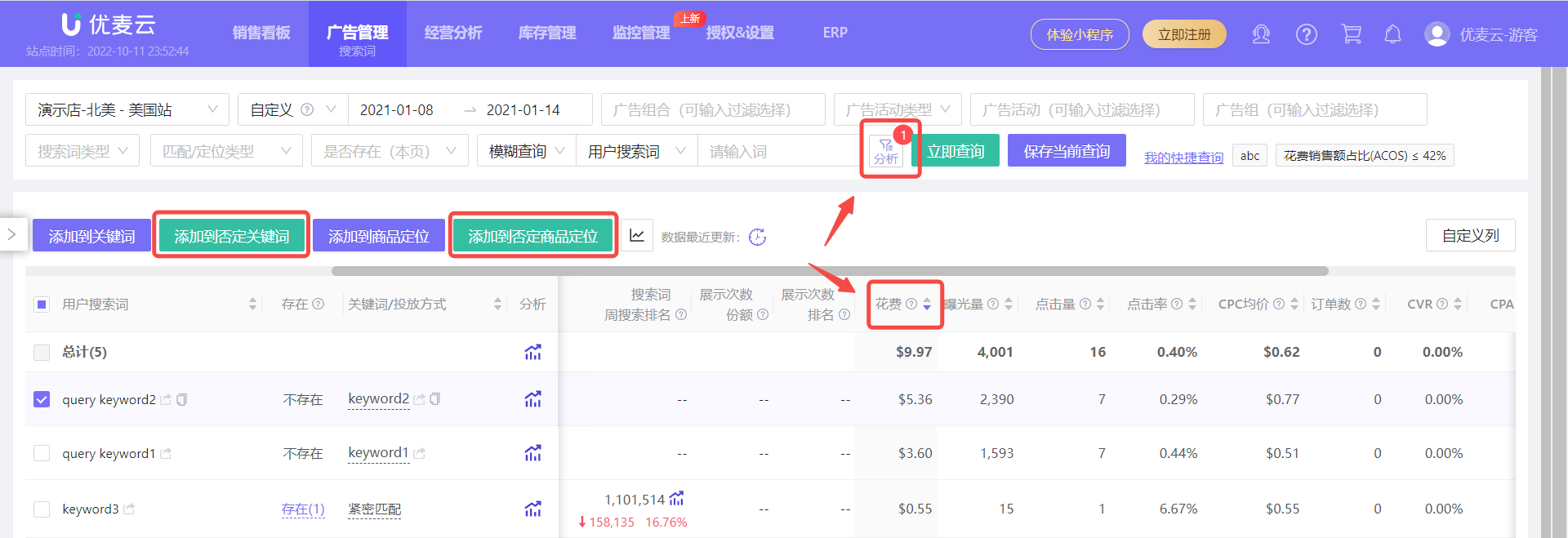 +
+
(Source: Ad Management -> Search Terms)
In addition to adding the identified terms to the negative keywords of the original ad group, you can also add them to other ad campaigns or ad groups with one click to prevent ineffective spending in advance.
 +
+
(Source: Ad Management -> Search Terms)
IV. Pay Attention to Ad Performance Dynamics and Adjust in a Timely Manner
Amazon advertising is not static; it is a dynamic process. If you are not careful, you may miss order opportunities and increase ad spend in vain. Therefore, you need to track and adjust ads at any time.
Through YouMailCloud's mobile applet, you can check ad performance anytime, anywhere and adjust ads, such as: bids, budgets, start/stop, add keyword targeting, negative keywords, etc.
 +
+
(Source: YouMailCloud Applet -> Ads)
Finally, sellers need to note that Amazon advertising not only promotes single purchase behaviors but also has an implicit effect on the overall and long-term promotion of the store. Therefore, ACOS should not be used as the only measurement standard. For some dimensional product strategies, although ACOS is high, it can still be acceptable.
For example, in the new product launch phase, buyers need a process to accept new products. A large amount of exposure must be used to gradually get users to accept them, so as to achieve the purpose of conversion. At this time, exposure and clicks are the main metrics. When the product gradually passes the new product launch phase, you need to focus on ACOS and think about how to maximize advertising revenue. Maximize advertising revenue.

SellerSpace is a concise tool to manage multiple Amazon accounts, focuses on solving various problems encountered by sellers during operating Amazon business.
Mail:support@sellerspace.com
©2018-2025 SellerSpace.COM All Rights Reserved
Online
Service
